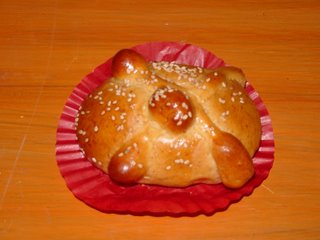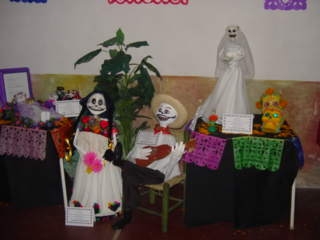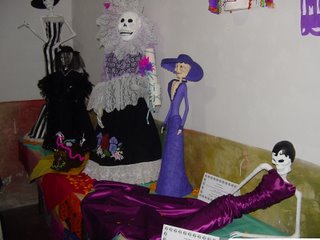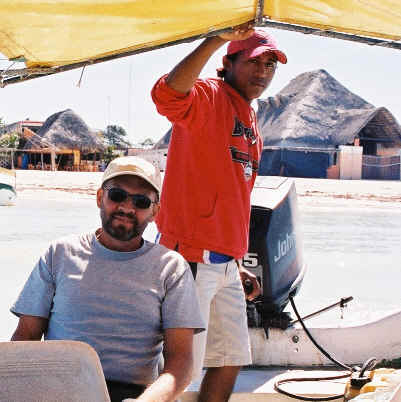 This is pan de Dia del Muertos (Day of the Dead), or bread for the Day of the Dead, which is observed on November 2 this year. My friends at the best internet café I’ve eve patronized presented me with the bread Tuesday as I was leaving from my daily visit.
This is pan de Dia del Muertos (Day of the Dead), or bread for the Day of the Dead, which is observed on November 2 this year. My friends at the best internet café I’ve eve patronized presented me with the bread Tuesday as I was leaving from my daily visit.

The modern observance of the Dia del Muertos combines the pre-Hispanic tradition of honoring the dead through erection of alters and the provision of offerings with Christian symbols, most notably the cross. Alters typically contain elements intended to represent earth, wind, fire, and water, so contain crops, containers of water and other beverages, candles, and colorful tissue paper that moves in the breeze.
The alters and the offering placed therein are often tailored to a particular person. Alters dedicated to deceased children, for instance, may be festooned with offerings of toys, or tequila and cigarettes may be placed on alters dedicated to a person who during his life enjoyed such.
 The alter you see in the photo was erected at the Tendedero de Illusiones (literally Clothesline of Illusions) Patio Munoz which is hosting four days of events to observe the Dia del Muertos.
The alter you see in the photo was erected at the Tendedero de Illusiones (literally Clothesline of Illusions) Patio Munoz which is hosting four days of events to observe the Dia del Muertos.
My friends at the internet café also provided me with a schedule of the events of the four days. Wednesday evening featured a display of paper mache art with a Dis del Muertos theme, as you can see in the pictures. There was also tango music; and, after I left there reportedly was dancing.
Saturday evening, as I understand there is each Saturday, there will be Fandango dancing, with which I am unfamiliar but understand is a synthesis of Spanish, African, and traditional dance that is unique to Veracruz.


1 comment:
Sounds like a wonderful time! Wish I were there to see it.
Post a Comment